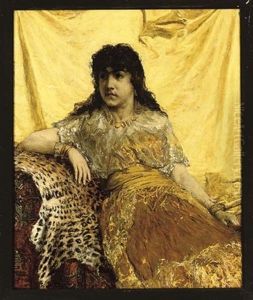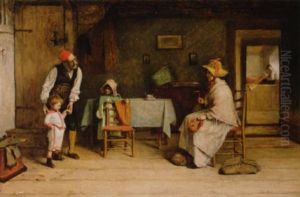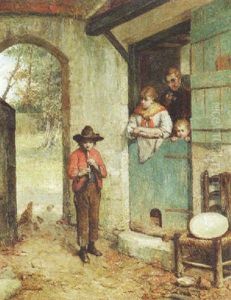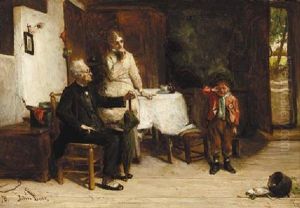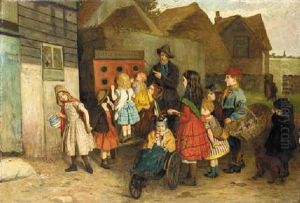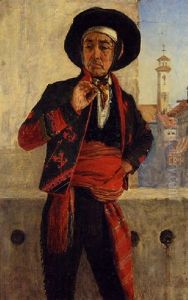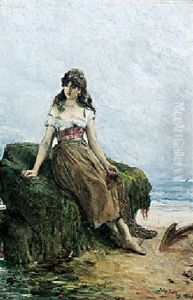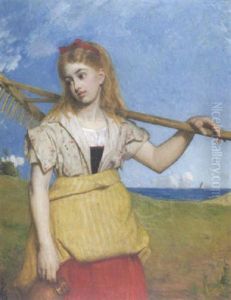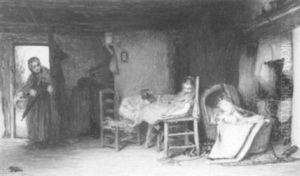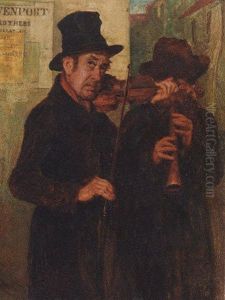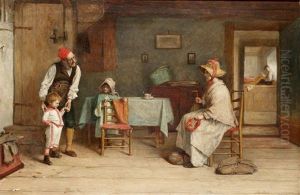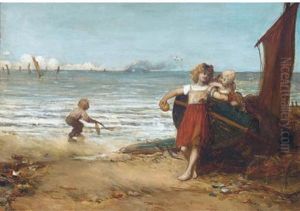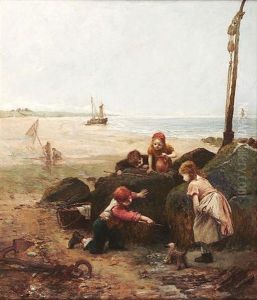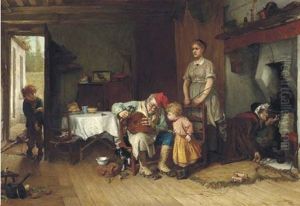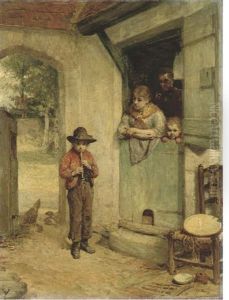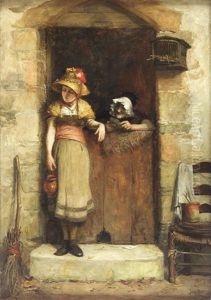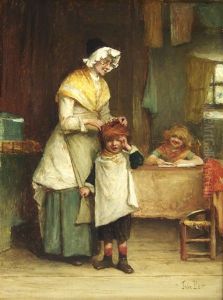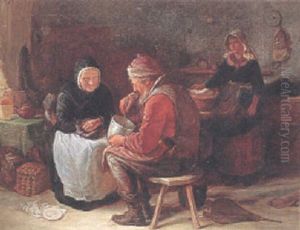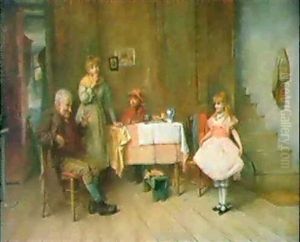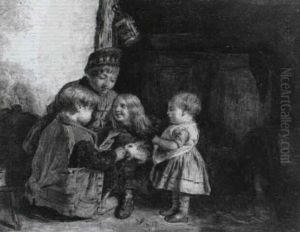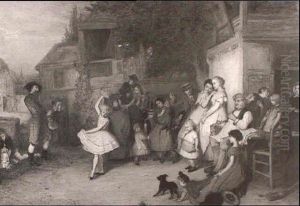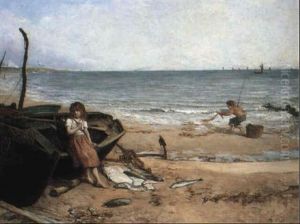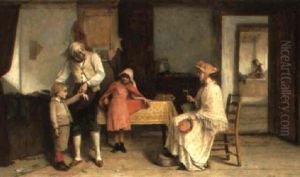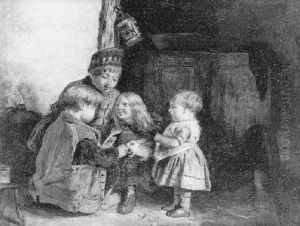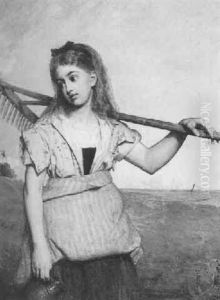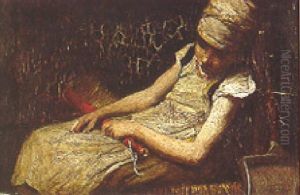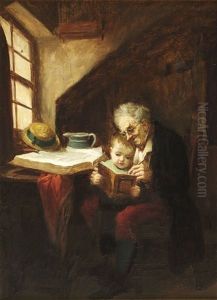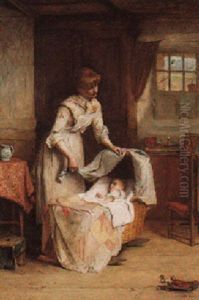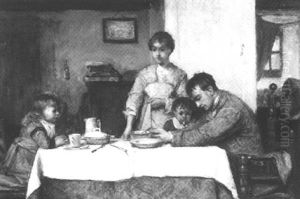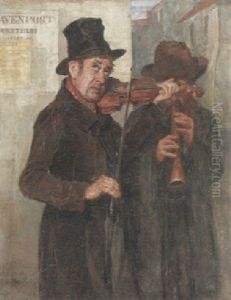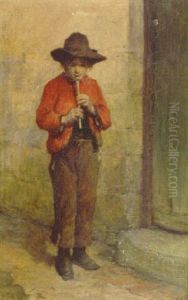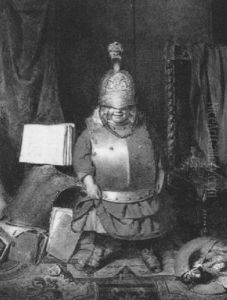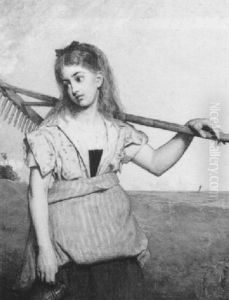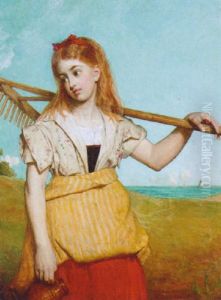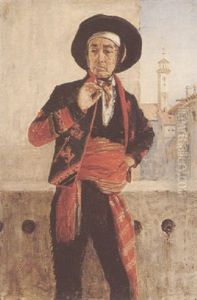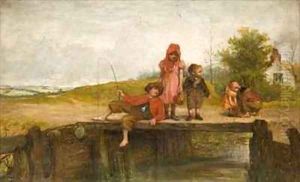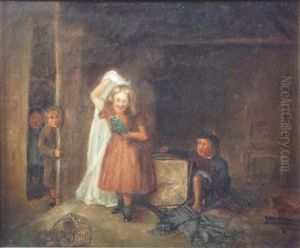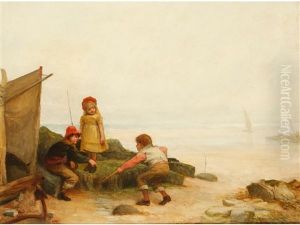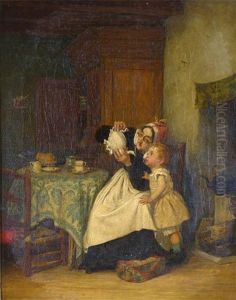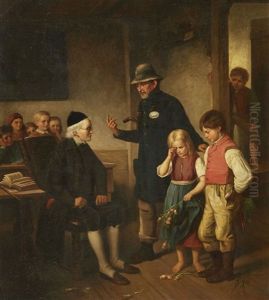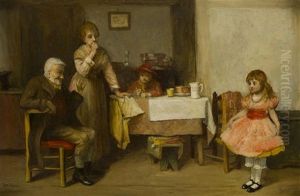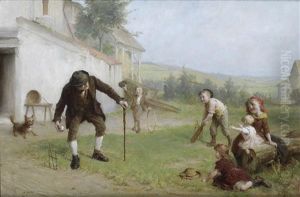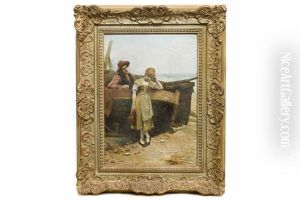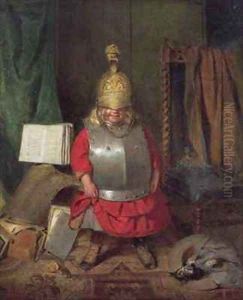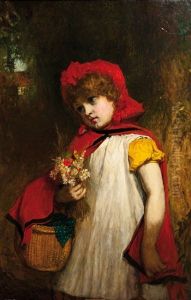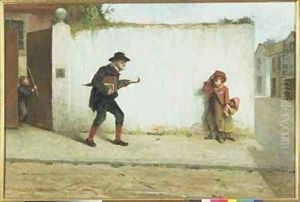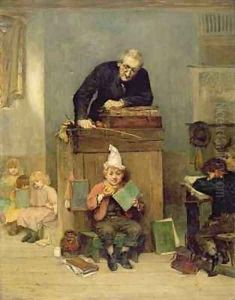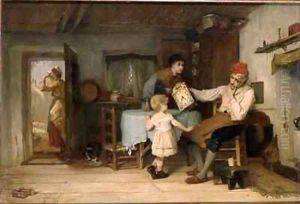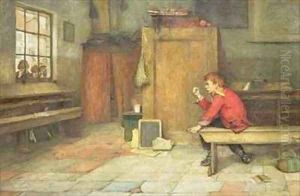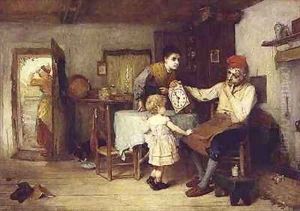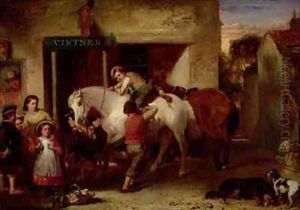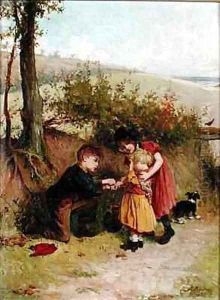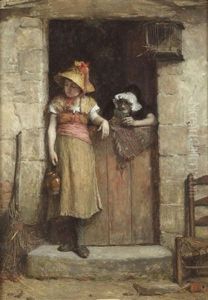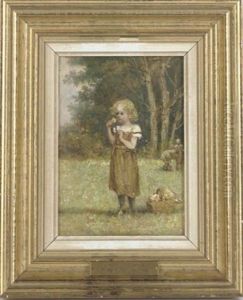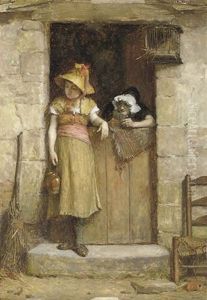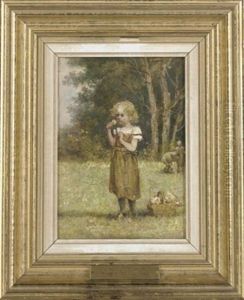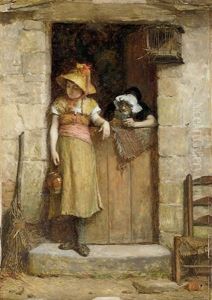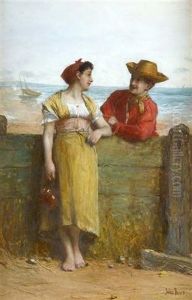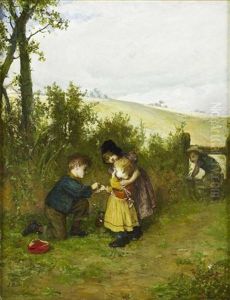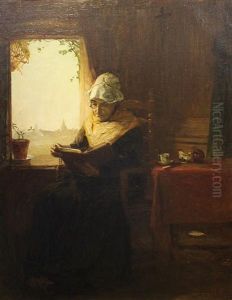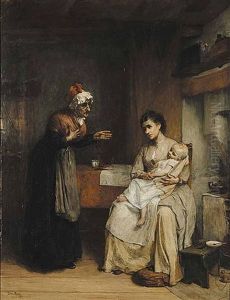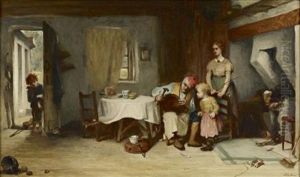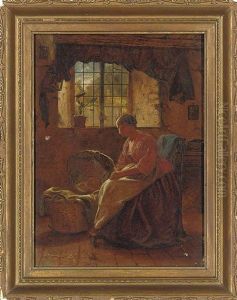John Burr Paintings
John Burr was a notable Scottish painter, known primarily for his genre scenes, landscapes, and portraits. Born on December 1, 1831, in Aberdeen, Scotland, Burr was the son of a master miller. Demonstrating an early affinity for art, he pursued his passion by studying at the Trustees’ Academy in Edinburgh, an important center for art education in Scotland during the 19th century.
Burr's early works were influenced by the Scottish landscape and rural life, often depicting scenes of everyday activities with a keen eye for detail and a profound sense of empathy for his subjects. His ability to capture the nuances of light and shadow, as well as the emotional depth of his figures, quickly garnered attention.
In 1861, seeking broader exposure and opportunities, Burr moved to London. This relocation marked a significant turning point in his career. London's vibrant art scene and the presence of numerous art galleries and patrons provided Burr with the perfect environment to refine his craft and establish his reputation. During this period, Burr exhibited his works at prestigious institutions such as the Royal Academy of Arts, the British Institution, and the Royal Scottish Academy, earning acclaim and the admiration of both critics and the public.
Burr's paintings are characterized by their meticulous detail, vibrant color palette, and the ability to convey complex human emotions and stories. His genre scenes, often set in rural or domestic settings, are particularly celebrated for their narrative depth and sensitivity to the plight and joys of ordinary people.
Throughout his career, Burr was influenced by the broader artistic movements of his time, including realism and the early stirrings of impressionism, yet his work remained distinctively personal and rooted in the traditions of Scottish painting. Despite the changing artistic trends of the late 19th century, Burr's dedication to portraying the human condition with honesty and compassion remained constant.
John Burr passed away on July 24, 1893, leaving behind a legacy that has continued to inspire and resonate with audiences. His contributions to Scottish art are remembered for their profound humanity and technical mastery, securing his place among the notable figures of 19th-century British painting.
